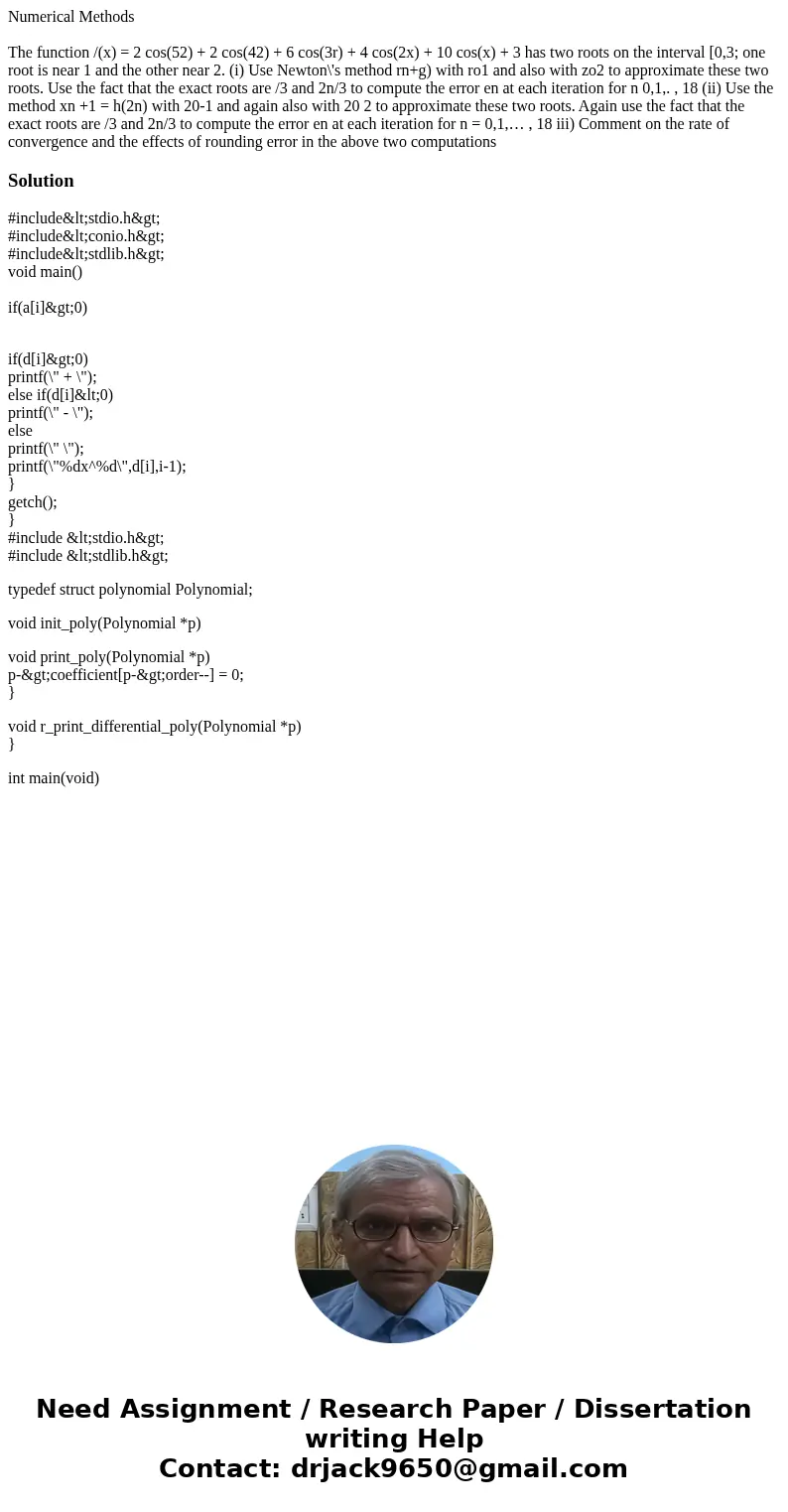Numerical Methods The function x 2 cos52 2 cos42 6 cos3r
Numerical Methods
Solution
#include<stdio.h>
#include<conio.h>
#include<stdlib.h>
void main()
if(a[i]>0)
if(d[i]>0)
printf(\" + \");
else if(d[i]<0)
printf(\" - \");
else
printf(\" \");
printf(\"%dx^%d\",d[i],i-1);
}
getch();
}
#include <stdio.h>
#include <stdlib.h>
typedef struct polynomial Polynomial;
void init_poly(Polynomial *p)
void print_poly(Polynomial *p)
p->coefficient[p->order--] = 0;
}
void r_print_differential_poly(Polynomial *p)
}
int main(void)

 Homework Sourse
Homework Sourse